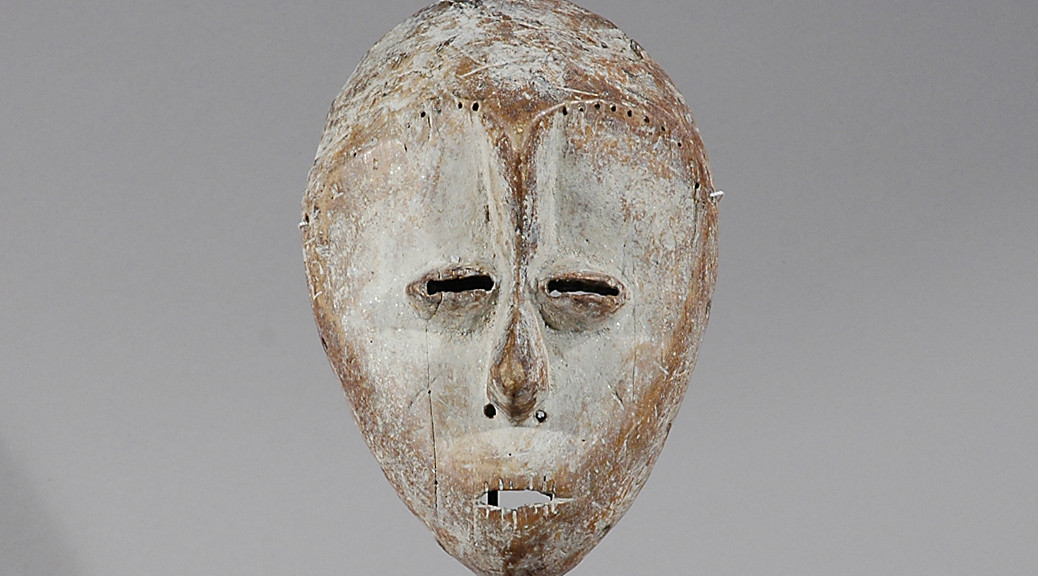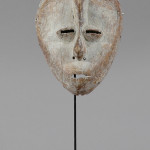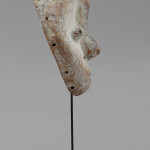AHK 712 – 0105-5
Lega Mask “Idimu”, Zaïre (DR Congo)
A fine flat oval facial plane, almond-shaped protruding eyes divided by profiled nose, high curved brows with incisions.
Lega masks are used as “bwami” initiation objects. There are five different types: “lukwakongo”, “kayamba”, “idimu”, “muminia”, and “lukungu”. They serve as important marks of rank, identifying the owners as members of specific “bwami” levels. The “idimu” mask is owned collectively and is kept by an appropriate member of “yananio” or “kindi”. In a major performance , the “idumu” mask is hung on a fence surrounded by the smaller, individually owned “lukwakongo” masks.
There are approximately 150,000 Lega people who live in autonomous villages in the forests of the eastern Democratic Republic of Congo. Their principal industries are fishing, farming and hunting. For the Lega, every work of art is associated with proverbs that, when part of a ritual combination of poetry, dance, art, and song, impart wisdom to the members of the society. Lega sculpture conveys the ethical, social, and political values of Lega culture.
Both men and women in Lega culture enter the centuries old Bwami society to learn skills and wisdom for life that are taught to initiates through art. Comprising five levels for men and three for women, Bwami is a voluntary association open to all Lega and its influence is meant to encompass the breadth of a person’s life. As the Lega say, “It is something that sticks and leaves a trace.” Most men and women enter the beginning levels of Bwami, but few reach the highest rank, known as Kindi. Character, kinship support, and participation in initiations dictate one’s advancement in Bwami. This lifelong educational process requires years of study with respected teachers and the successful completion of a series of initiatory rites that combine music, dance, gesture, proverbs, and the visual arts. As the initiate interprets a precise combination of these elements, their knowledge of Bwami truths is revealed and their achievements honored.
Age: Est. 40-60 years old.
Literature: Cameron, Elisabeth L., “Art of the Lega” and Biebuyck, D., ”La sculpture des Lega”
Click here for more information about the Lega people
Request price for Lega Mask




